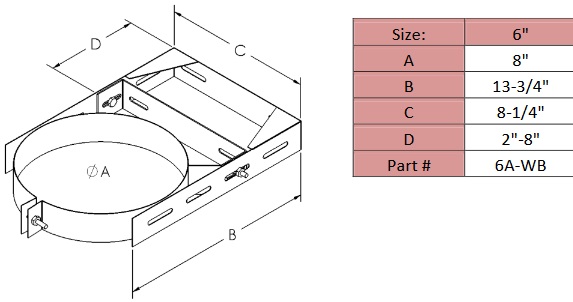Home Site Map - Techniques - Interior Infrastructure -
Heating - Wood Fire
![]() If you have access to wood then you can't beat the feel of a good
fire.
If you have access to wood then you can't beat the feel of a good
fire.
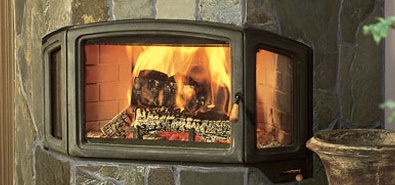
The wood burning fire I selected is here .
I like to be able to see the fire. I'm using two wood fires. One in the basement mudroom and one in the living room. In practice the workhorse will be the mudroom fire because it is better to handle the messy wood there. The hot air from there will be ducted to the main level living area. The wood fire in the living room will likely only get used on special occasions such as Christmas and Thanksgiving and a few other long winter nights.
Can either feed the heat exchanger with fresh air from the HRV or let it recirculate the air already in the room. Recirculation is my choice as it will make the room warmer. To avoid fan noise, put the fan remote in the basement ceiling.
Efficiency
All EPA-certified stoves run within the same band of overall efficiency (combustion and heat transfer) - about 70 percent plus or minus 10 percent.
Needs to be an "Advanced Combustion" wood fireplace, ie one that is a fire behind gasketed glass doors that does a secondary burn of the emitted gasses. The fire is fed with outside "burn" air and all fire exhaust goes out the chimney. Room air is blown in separately and then goes via a heat exchanger before being sent to the room as hot air. You can divert the hot air off to other parts of the house. You can place a heat pump in the warm output air and use it to make hot water.
It must be 2.0 gr/hr or less to be sold and installed in WA state.
Blaze King also said: "You should look for a non catalytic stove with an HHV efficiency rating of 65%-70%, any more efficient that in this range could result in poor performance. I might suggest you look for a very large firebox 3.5 cu. ft. or more.". If the fire is too efficient then the gasses in the chimney will be too cold by the time they get to the top of a 50 foot chimney.
There are two types of wood stoves: catalytic and non-catalytic stoves. I would advise anyone who is buying a new stove to choose a non-catalytic model, because catalytic stoves are fussy to operate. Catalytic stoves have another major disadvantage: their catalytic converters have a limited lifespan and are expensive to replace when they wear out.
It is not really recommended to have a chimney of more than 30 feet on a stove, but it is possible if you do all the right things. The chimney needs to be a Class A insulated chimney all the way from the fire to the roof (no stove pipe sections). Ideally you can add extra fire proof insulation inside the wooden raceway that surrounds the insulated chimney. It's all about keeping the chimney hot enough inside all the way to the roof. Certainly never route the chimney outside the warn house envelope.
If you find you don't have enough draft from the chimney then you can add an inline fan in the burn air fed to the fire. This is particularly useful for helping lighting the fire. If you have too much draft from a long chimney then you can constrict the air to the fire using an inline duct variable damper.
Must be WA approved as shown in the following list...
https://fortress.wa.gov/ecy/ezshare/AQ/PDFs/wood-stoves-approved.pdf
Note that on the list, Drolet is called Stove Builder International Inc.
Also note that the Drolet HT2000 is listed but the Drolet HT3000 (that
is the updated version of the HT2000) is too new to be listed. It
is reasonable to expect the HT3000 will be on a future version of the WA
list, particularly as it meets the new EPA2020 standard.
My fire choice for the mudroom is...
Drolet HT3000 on pedestal - High-Efficiency EPA Certified Wood Stove DB07300 (The HT3000 replaces the legendary HT2000)
It needs to be fitted with the outside burn air option.
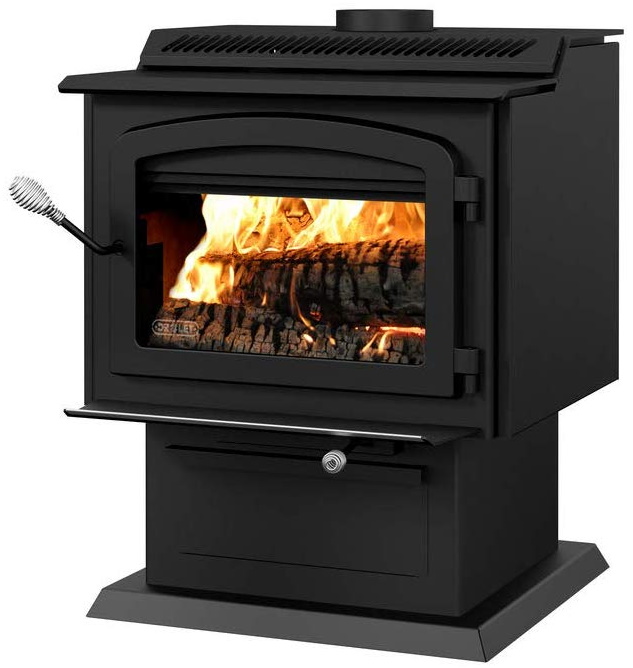
https://www.amazon.com/gp/product/B07SX4T4Y9/ref=ox_sc_saved_title_2?smid=A28O29YFUDL5G4&psc=1
$1,299
https://www.drolet.ca/en/products/stoves/ht3000-wood-stove/
https://sbiweb.blob.core.windows.net/media/5209/46109a_2019-06-14.pdf
22" logs
1.32 g/h average particulate emissions rate (Meets EPA 2020 standard)
https://www.drolet.ca/en/products/stoves/ht3000-wood-stove/#fiche-technique
Eligible for a $300 biomass stove tax credit ( www.hpba.org/Advocacy/Biomass-Stove-Tax-Credit )
Drolet ht2000 vs ht3000
https://www.hearth.com/talk/threads/drolet-ht3000-vs-ht2000.176472/
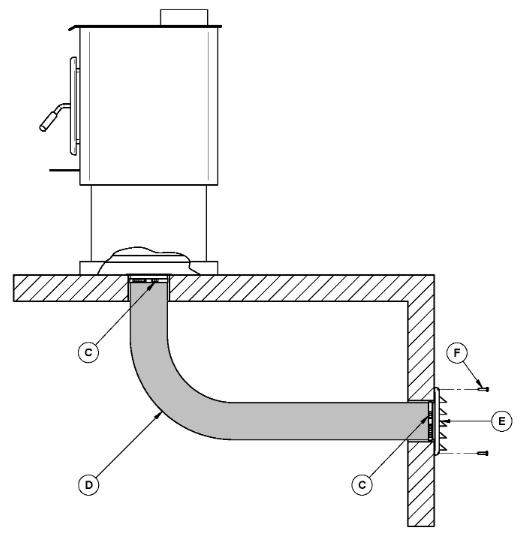
Firewood
A cord is a volume of neatly stacked firewood measuring 128 cubic feet. The traditional way to stack a cord is to make the pile 8 feet long, 4 feet high, and 4 feet deep. If you are using 24-inch wood, such a cord is two stacks deep. If you are using 16-inch wood, such a cord is three stacks deep.
My choice is to standardize on 18" long wood (to easily fit into a 21" firebox). This means if stacking in two rows then the length of the wood rack should be 12'8" long (with a height of 4').
Fan noise
There will be a fan to drive the room air through the heat exchanger. You need to ensure there is no fan noise. Put the fan in a remote location.
Chimney
When selecting a fire don't forget about the cost of the chimney. The chimney will easily cost as much as the actual fire. Small diameter chimneys are less expensive than large diameter.
You must use a chimney with a spec that is as specified for the particular fire model you chose. It must be a stainless chimney for a wood burning fire.
The chimney needs to be high above the roof in order to meet the 2 foot 10 foot 3 foot rule. It must be at least 2 feet taller than any structure within 10 feet of it and also at least 3 feet higher than the point at which it penetrates the roof. In my case I need to have a couple of joggles in the chimney to get it more than 10 feet from the edge of the cupola. My assumption is that the railings round the top of the roof do not count as being part of the roof height as they are permeable to wind, so that means the chimney only needs to be 2 foot higher than the top edge of the roof. In practice my chimney height is the same as the top of the railings.
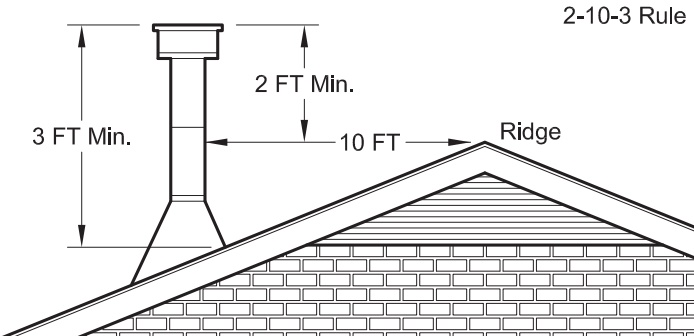
The chimney may well require guy wires to strengthen it from high winds.
Make sure the fire you chose is able to handle the long length of chimney that will be fitted to it.
The chimney flue should be the same size as the appliance flue collar. Chimneys that are over-sized for the appliance they serve are common, partly because people used to think that bigger is better, but bigger is not better when it comes to chimney sizing. A given volume of flue gas flows faster and has less time to lose heat in a small chimney flue than in a large one. In planning wood heating systems, experienced installers will sometimes choose a chimney that has a smaller inside diameter than the appliance flue collar. This is usually done when the chimney runs inside the house and is very tall. Chimneys that exceed 8 m (about 25 ft.) in height sometimes produce more draft than the appliance needs, so a smaller chimney can be used without any reduction in performance.
It is best to route the chimney inside the building enclosure as this avoids excessive cooling of the gasses in the chimney (reducing up-draft) and also inside it helps heat the house.
In my case, the offset in the basement to get to the wall can be 15 degree. The offset from above the bedroom window to the roof chimney will need to be 30 degrees and even then it will be tight. Need about 6' height to make the 34" offset.
My choice is to use the Shasta insulated 6" chimney system. The inside diameter is 6" and the outside diameter is 8".
Shasta Vent All-Fuel HT Chimney is a double wall, solid-filled residential chimney featuring .020" type 304 Stainless Steel inner and outer walls with a 2" clearance to combustibles. All-Fuel HT Chimney also features precision engineered twist-lock end rings and quick and easy Locking Bands. The high-temperature ceramic blanket insulation is encased between the stainless steel walls of the pipe sections to maintain a strong draft, while maintaining a relatively cooler temperature on the exterior wall. In installations where offsets are required up to four 30 (or 15) Degree elbows, each capable of rotating 360 Degrees, can be used in the system. The Shasta Vent All-Fuel HT Chimney is ETL Listed by Intertek to the HT requirements of UL 103. Tested to 1000 Degrees F continuously, 1400 Degrees F for 1-hour, and 3x 2100 Degrees F for 10-minutes as would be encountered in a creosote fire.
https://www.northlineexpress.com/shastavent-finder-6.html
https://lib.store.yahoo.net/lib/yhst-95622685483394/shastavent-product-manual.pdf
http://www.shastavent.com/assets/SV_All_Fuel_HT_Chimney_Installation_Instructions_v1.10.pdf
Even with insulated, Still need 2" of air clearance to combustibles.
It is best to buy the fireplace before buying the chimney to ensure the fire can properly interface with the selected chimney system. You will need to use a "Finishing Colar" to provide the interface.
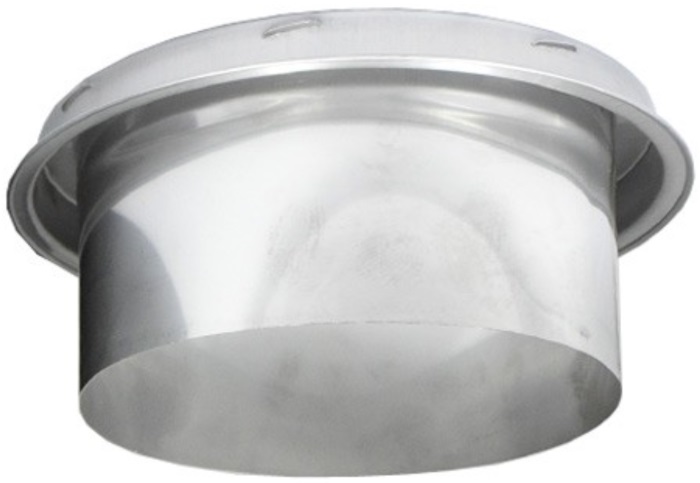
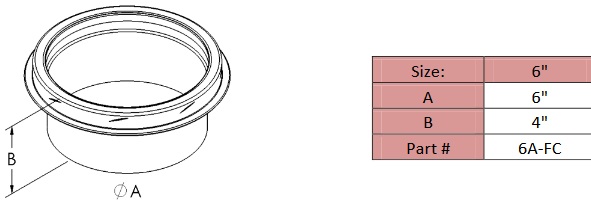 https://www.northlineexpress.com/shasta-vent-6-inch-finishing-collar.html
$27.60
https://www.northlineexpress.com/shasta-vent-6-inch-finishing-collar.html
$27.60
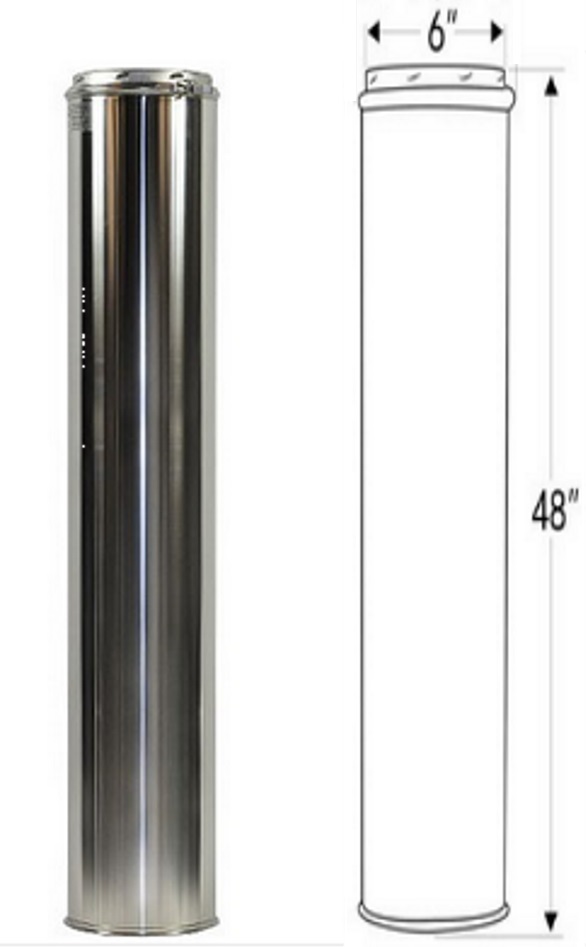
https://www.northlineexpress.com/shasta-vent-6-inch-x-48-inch-chimney-pipe.html $135
Note that it is only allowed to have two joggles. In my case a 15-15 joggle is used in the basement and a 30-30 joggle is used in the bedroom ceiling.
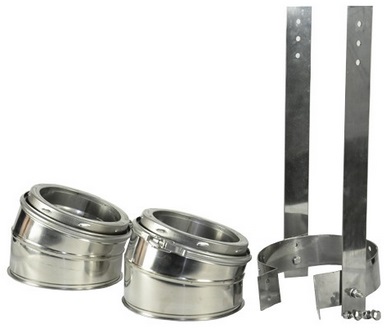
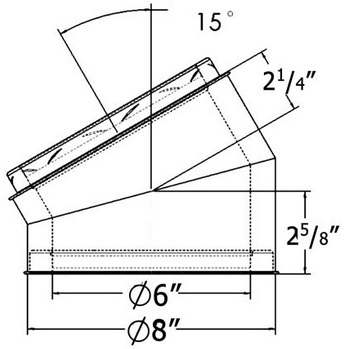
https://www.northlineexpress.com/shasta-vent-15-degree-elbow-6a-e15.html $225.90
The bracket will be installed under the wood framed box in the ceiling.
30 degree version (for the bedroom ceiling joggle...
https://www.northlineexpress.com/shasta-vent-30-degree-elbow-6a-e30.html $298.80
Ceiling collar
Framed opening in floor needs to be 1' 0-1/4" square.
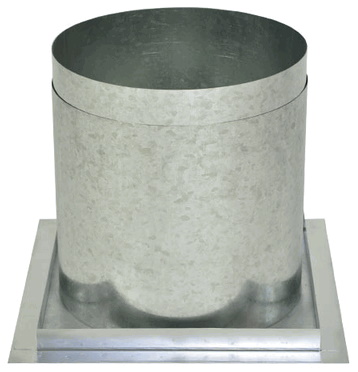
Rather than use a framed ceiling support box with chimney connectors, in my case just use a regular 4 foot chimney section through the concrete floor. Doing it like this avoids having to use an adjustable length chimney section and lengths other than 4' to get exactly the required length to the ceiling box.
It is necessary to frame the opening with lumber. The wood will form a frame with a 12"x12" opening. In my case a framed square is used on top of the floor EPS prior to the concrete pour. After the concrete pour the floor EPS is cut away and further taller wood framed square is used underneith.
Spacing bracket
